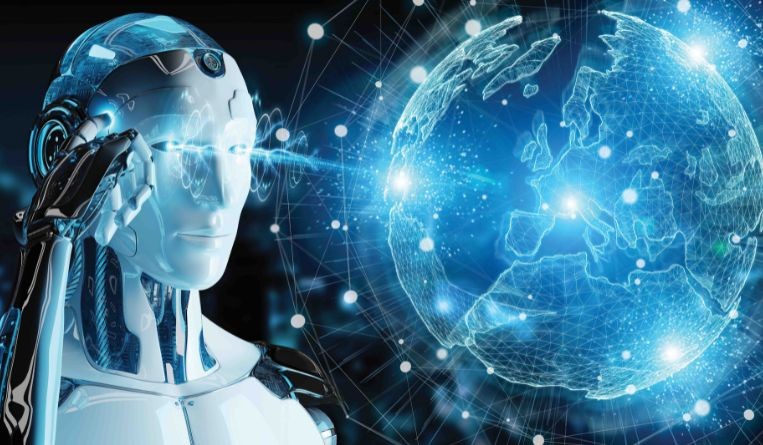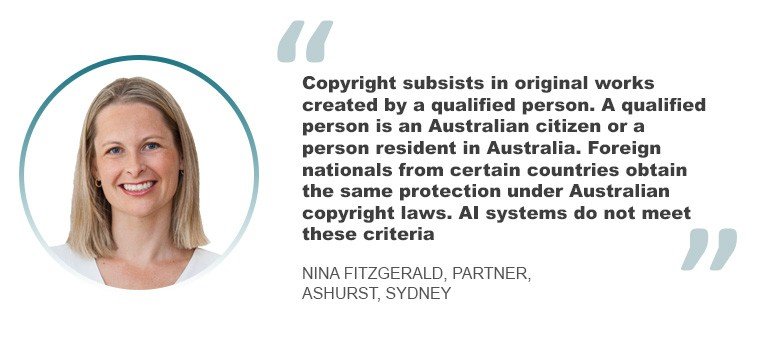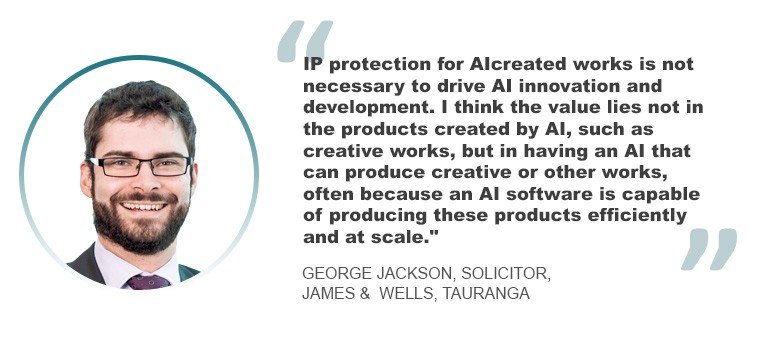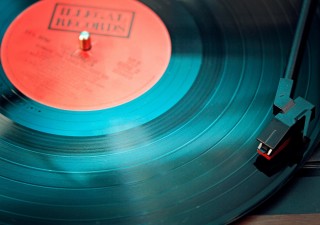Artificial Creators: Can Works by AI Warrant IP Protection?
30 April 2022

How far can artificial intelligence go? For many, that is the question about how much AI can accomplish, but for Stephen Thaler, a scientist, inventor and business executive based in St. Louis, the question is how ready our world is for AI creations, particularly the IP aspect.
Thaler has been challenging different jurisdictions around the world as to whether works created by AI, such as paintings and inventions, can be granted IP protection or, in other words, whether AI can be regarded as a creator or inventor.
The results vary. In February 2022, the U.S. Copyright Office rejected his application to copyright a picture created by the “Creativity Machine”, an AI algorithm owned by Thaler. The copyright office stated that an author of a copyrightable work must be a human being because copyright law is intended to protect the work of a human’s intellectual effort. In January 2022, the Intellectual Property Office of New Zealand confirmed that the invention of a cylindrical food or beverage container by DABUS, another AI system created by Thaler, is not patentable because the term “inventor” refers only to a natural person, according to New Zealand laws. However, in Australia, a single judge of the Federal Court determined in 2021 that DABUS can be named as the inventor on its patent application, concluding that the legislative regime for patent law does not require a human inventor. Yet this judgement was overturned upon appeal in April 2022, in which the Full Court of the Federal Court determined that an inventor must be a natural person.
So, it’s fair to say that whether AI works can enjoy IP rights is still a disputable matter, and the issue has to be examined according to the specific legal framework of each individual jurisdiction. Take Australia, for example. Even though there have been conflicting judgments towards a patent application by artificial intelligence, for copyrightable matters, itis a completely different story. “A work created by an AI system without human involvement is unlikely to be entitled to copyright protection in Australia,” said Nina Fitzgerald, a partner at Ashurst in Sydney. “Under the Copyright Act 1968 (Cth), copyright subsists in original works created by a qualified person. A qualified person is an Australian citizen or a person resident in Australia. Under the Copyright (International Protection) Regulations 1969, foreign nationals from certain countries obtain the same protection under Australian copyright laws. AI systems do not meet these criteria.”
“There is no Australian case which has specifically addressed the issue of whether AI-generated creative works can attract copyright protection,” she said. “However, when considering computer-generated works, the Federal Court has concluded that, without substantive human input to the final material form, such works are not entitled to copyright protection. The same reasoning is likely to apply to a work which is solely created by an AI system.”
Being considered as a computer-generated work is one possible way for creative works made by AI to warrant copyright protection. Alan Chiu, managing partner of Ellalan in Hong Kong, said: “According to Section 11(3) of the Copyright Ordinance, in the case of literary, dramatic, musical or artistic work which is computer-generated, the author is taken to be the person by whom the arrangements necessary for the creation of the work are undertaken. Based on this section, it is arguable that AI generated works are protected by copyright under Hong Kong copyright regime, though the Copyright Ordinance (Cap. 528) does not contain any section specifically covering AI
and the legislators might not have intended to do so in the first place when they passed the law in 1997.”

In New Zealand, also, it has not been specifically addressed in the law whether a creative work made by AI software can be granted copyright, either by case law from the courts or by legislation, which is the Copyright Act 1994, as explained by George Jackson, a solicitor at James & Wells in Tauranga. However, he also pointed out that the Copyright Act 1994 is under review by the Ministry of Business, Innovation and Employment, which is considering whether there should be rights granted to AI-created copyright works.
Obviously, many find it necessary to incorporate AI works into copyright laws, given the latest development of the technology. For Hong Kong, with the consultation on the amendments to the Copyright Ordinance just completed, Chiu said there are public voices suggesting introducing amendments related to AI generated work into the Copyright Ordinance as well, but there has not been any concrete proposal from the HKSAR government yet.
Even if AI works are entitled to copyright as computer-generated works, there might still be disputes over which party is the one who undertakes the necessary arrangements for the creation of the work. “Given the absence of specific sections in the Copyright Ordinance specifically dealing with AI-generated works and the lack of judicial precedents, the ownership issue will largely be determined on a case-by-case basis depending on the court’s interpretation of the law and the factual circumstances,” Chiu said. “It is possible that the users, owners, developers of the AI software or creators of works from which the AI adapts the creative process are qualified as authors, and hence the first copyright owners.”
Furthermore, the copyright granted to these AI work authors might not be the same as conventional copyright of human authorship. “Unlike a human author, the author of the computer-generated work, such as the person who arranges the AI to create the subject work, does not enjoy moral rights to the work, namely, the right to be identified as author (Section 91(2) of the Copyright Ordinance) and the right to object to derogatory treatment of work (Section 93(2) of the Copyright Ordinance),” Chiu said.
Chiu said that AI works may also be subject to patent protection in Hong Kong. “However, even if AI works can satisfy the basic requirements for patent protection, namely novelty, inventive steps and capable of industrial application, it remains uncertain as to whether a machine or a computer can be treated as an inventor, because the Patent Ordinance in Hong Kong (Cap.514) does not contain any AI-specific provisions, either.”
Currently AI-created works are not protected by any other IP rights in New Zealand, according to Jackson. Following the rejection of Stephen Thaler’s New Zealand patent application for AI invention, Jackson believes that similar reasoning will likely apply to design registrations and trademark rights in New Zealand, should that argument be raised regarding those rights.
In Australia, AI works may be protected utilising contractual restrictions and, in particular, confidentiality provisions in appropriate circumstances, according to Fitzgerald.
As AI technology keeps advancing, should the IP laws be updated to cover protection for AI creations? “Legislative amendments are essential, in order to bring our laws more in line with advanced technology and provide better clarity and legal certainty to the AI industry players and interested parties,” Chiu said. “On copyright side, we may consider having provisions to facilitate copyright protection by defining the authors for AI-generated creative works, to spell out whether

there is different treatment between AI-generated and AI-assisted creative works, to provide exceptions to data mining or copying and imitation of copyright works by AI for self-learning purposes, to clarify who is responsible for copyright infringement resulting from AI-generated content.”
“On the patent side, we may consider having provisions to clarify whether a computer or a machine can qualify as an inventor,” he said. “Our Patents Ordinance refers to an inventor as a person. Unlike the Copyright Ordinance, the Patents Ordinance makes no express reference to computer-generated work. Further, under the Interpretation and General Clauses Ordinance (Cap. 1), a person refers to an individual or a body corporate. There is no mention about a computer or a machine.”
“Turning to the issue of patentability, discovery and math algorithm are generally regarded as nonpatentable subject matters. Since AI relies on data and algorithms to generate works, our law should be updated to clarify the extent to which AI-created works are patentable,” he said.
Jackson, on the other hand, has a different view about extending IP protection for AI works. “New Zealand copyright rights are granted on the basis that the rights give sufficient economic return to encourage investment into those activities. Given there is no copyright protection currently for AI created works, that is a sign that the New Zealand government believes there is sufficient investment encouragement in the existing provisions of the Copyright Act 1994. However, the government is currently reviewing the Copyright Act 1994, and this issue could be raised as part of that review.”
“I think, at a high level, IP protection for AI created works is not necessary to drive AI innovation and development,” he said. “AI software is itself protected by IP rights – in New Zealand the software is protected by copyright, and the know-how or operation as confidential information. I think the value lies not in the products created by AI, such as creative works, but in having an AI that can produce creative or other works, often because an AI software is capable of producing these products efficiently and at scale.”
While legislative amendments might not be an immediate solution, at present owners and developers of AI systems can also take steps to better protect their IP rights. Chiu offered suggestions for trade secret, patent and copyright protection: “Trade secrets may cover a wide range of information which is relevant to AI, such as computer programs, formulae, compilations and codes. The owners or developers of AI software may identify the relevant information which is confidential and enter into non-disclosure agreements with third parties to maintain secrecy of such information.”
“As regards patent protection, if the patent claims consist of a method which involves the use of technical means, such as a computer, a technical character is conferred on the subject-matter as a whole, enabling patent eligibility. Compared to trade secrets protection, patent protection is generally stronger as it prevents third parties from independently developing their own version of the product, process or formula.”

“For better copyright protection, owners or developers should provide clear record of the development of their AI software and who is the responsible for the arrangement for the work to be created by AI, which is essential in proving copyright ownership in case of dispute.”
“On a related note, it is also important to consider privacy concerns related to the use of AI technology,” Chiu said. “As everyone knows, AI requires big data analysis. This is in some way inherently in conflict or are stretching the limits of fundamental data protection principles such as ‘notice and consent’, ‘use limitation’ and ‘transparency’. Under the Hong Kong Personal Data (Privacy) Ordinance (Cap.486), data users must notify the individuals before collecting their personal data, such as name, ID, mobile number, physical address, email address, biometric data, etc. This is the notice and consent principle; data users are not permitted to use personal data for a new purpose unless with the consent of the individuals. Prescribed consent must be express, voluntary and informed. Data subjects must be adequately informed of the new purpose, the potential data transferees, and the associated risks. This is the ‘use limitation’ principle and the level of transparency required.”
“Since the foundation of AI is data, it is important that such personal data be securely stored, used safely and to a good end, and comply with applicable privacy law on collection, use and storage of data. There should be clear policies and transparency about the data collection and use, and good controls so people can make choices about how their data is used. However, for most existing AI technologies, it is lacking this transparency. Besides, given the inherent unpredictability of AI applications, it appears difficult to provide specific information to the data subjects before their personal data is collected, processed or used,” Chiu said.
“Furthermore, it is important to bear in mind that AI systems and decision-making using AI should be human-centric – it should put the protection of users’ any AI project. Hence, especially with the increasingly stringent privacy rules around the world such as the General Data Protection Regulation, privacy concerns will be a key issue to be resolved in developing AI technology.”
Jackson also gave advice for AI owners in New Zealand. “In New Zealand software per se is not patentable, including AI. The policy choice in New Zealand is that AI software is protected by copyright and to an extent the law about breach of confidence.
Given the legal uncertainty about AI-created copyright works, I would advise clients to ensure that they have sound practical as well as legal protection in place for their software. Ensure you have a good IP strategy in place, including considering potential practical measures that might ensure your control. A good IP strategy will take into account that AI created works aren’t protected and ensure that you have all available protections in place for your AI software and its content.”
To determine the best IP protection strategy in AI systems and the output generated by AI systems, Fitzgerald suggested considering how the AI system is trained and any restrictions on use of the training data; whether the AI system is, or will be, publicly available or whether it is possible to keep it confidential; the nature of the product or service created through use of the AI system; and whether the AI system, or the product of the AI system, may be eligible for patent protection.
“Ultimately, the strategy adopted is likely to utilize a combination of different IP, contractual and other legal mechanisms. Seeking legal advice is necessary to ensure that the most effective strategy is implemented,” she said.
Ivy Choi






